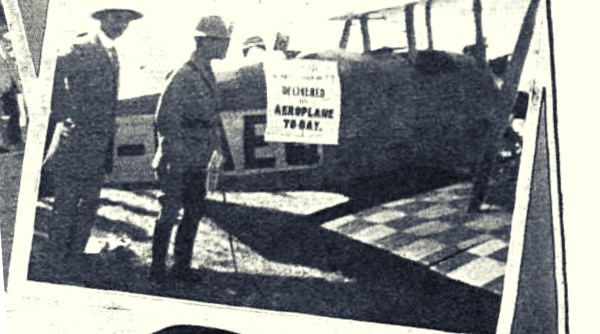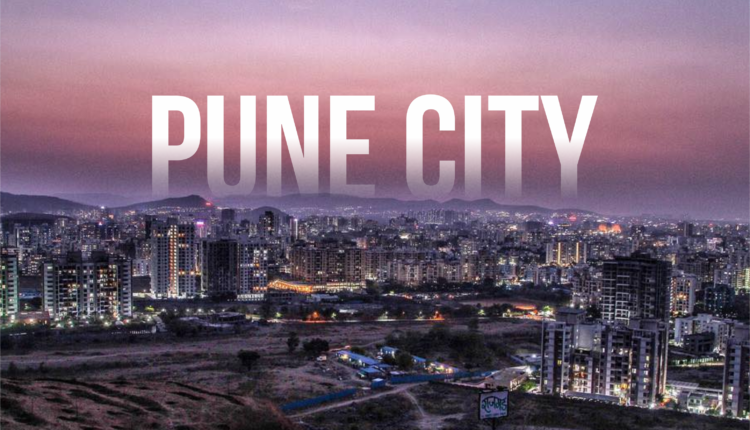On the afternoon of December 21, 1919, the people of Pune (then Poona) witnessed a great novelty. That Sunday, thousands of residents saw an aeroplane in action for the first time, leaving them thrilled, mesmerised and enraptured with this flying machine – although it had the capacity to accommodate just two people.
They had read about the heroic agility of these machines in the newspaper accounts of World War I and heard of the devastation brought by aerial bombing. But it was their first encounter with the flying machine sans the menacing context of war. During the previous decade, several maharajas loyal to the British throne had bought fighter planes and gifted them to the government for use in the war that was mainly taking place in Europe.
The plane visiting Pune was Nieuport and General Company’s Nighthawk, an aircraft which was developed in Britain for military use and later modified as a commercial flyer. It was sent to India with a couple of pilots to undertake promotional flights to gauge if there was a market for aircraft in India.
It had arrived in Bombay by sea a week ago and its journey from there to Pune was also the first ‘newspaper flight’ in the country as it carried copies of the Sunday edition of the Anglo-Indian Bombay paper ‘Advocate of India’ for distribution in Pune.
As per reports, the biplane was supposed to arrive in Pune skies at 10.30 am and tens of thousands of locals, including senior officials in the administration – both British and Indian – had gathered at the Race Course to watch the then-unfamiliar leap of science.
 Newspapers arrive in Pune in the flight. (Flight International magazine’s March 1920 issue)
Newspapers arrive in Pune in the flight. (Flight International magazine’s March 1920 issue)
“A large number of the chief people of Poona assembled on the racecourse before 10 o’clock, filling the grand stand and all the stands along the racecourse, while huge crowds filled the sand track and the grass track, the Sholapur Road side of the Maidan. On the opposite side (there was) a moving mass of thousands of persons. The ground was kept by the military: the traffic was looked after by the police,” described a newspaper report.
There was, however, some delay in the arrival of the plane and some anxious prominent Britons had started to leave the grounds as the temperatures began to soar when at 12.50 pm, the “shrieks and shouts rented the air and the Nighthawk was seen careering over Poona at top speed”.
In the evening, the crowd grew even stronger to witness the air show. “The airmen got going at 5.20 pm and for twenty minutes they thrilled the spectators with their daring and intrepid serves, spirals, climbs and drives, not to mention his wonderful feats of looping the loop,” wrote the paper.
The Nighthawk in India
The Nieuport Nighthawk was originally developed for the British Royal Air Force (RAF) towards the end of the war. It did not enter large-scale service though, reportedly owing to unreliable engines which “got so hot they sometimes charred the propellers!”. The two-seater was designed by H P Folland and powered by one 320 HP ABC Dragonfly engine with a span of 28 ft and length of 18 ft, with a capacity to fly at 150 mph and rise to 2,000 feet in 17 minutes.
The firm had sent Captain R S Carrol and Lieutenant J H James to India on a promotion mission sans the aircraft. After landing in Bombay in September 1919, the duo realised that they would need the aircraft if they were to achieve any marketing success. Upon Captain Carrol’s request, a Nighthawk arrived at Bombay dock aboard SS Gandara.
The Nighthawk was assembled in record time, and the next day it rose from the Willingdon Club grounds to court the Bombay sky. The plane enthralled the spectators with hair-raising zooms, dives, loops and spins before returning to the dock after covering Bandra, Oval, Fort and Apollo Bunder.
The nationalist press was not as thrilled as the promotional event was a part of the ‘Peace Celebrations’ organised by the British government to mark the end of the war and ‘reestablishment of peace in Europe’ and was opposed by the Indian National Congress.
The promotions by Captain Carrol and Lieutenant James did not go in vain, however, as the Nighthawk was sold to an Indian buyer in September 1920.
Flight operations in Pune
It would take two more decades for an aircraft to become a common sight in Pune. This happened after a base of the Royal Indian Air Force (RIAF) came up at Lohegaon to protect Bombay and other important areas in the vicinity. This base remained busy throughout World War II with several squadrons operating from here. This later became the Indian Air Force station and then a civil enclave for commercial operations.
“The end of WWII gave a real fillip to the civil aviation industry as surplus aircraft manufactured for defence purposes – especially those for transport of troops – were modified and sold for civil usage throughout the world,” said Dhairyashil Vandekar, aviation expert.
In 1953, when the Indian government nationalised the civil aviation sector and floated Indian Airlines for domestic commercial operations, some scheduled operations started from Lohegaon’s civil enclave connecting it to Bombay and Belgaum. The operations remained inconsistent for the first decade – being shut for years in between – despite high demand. Civil operations stabilised only after 1965 and have only grown since then.


